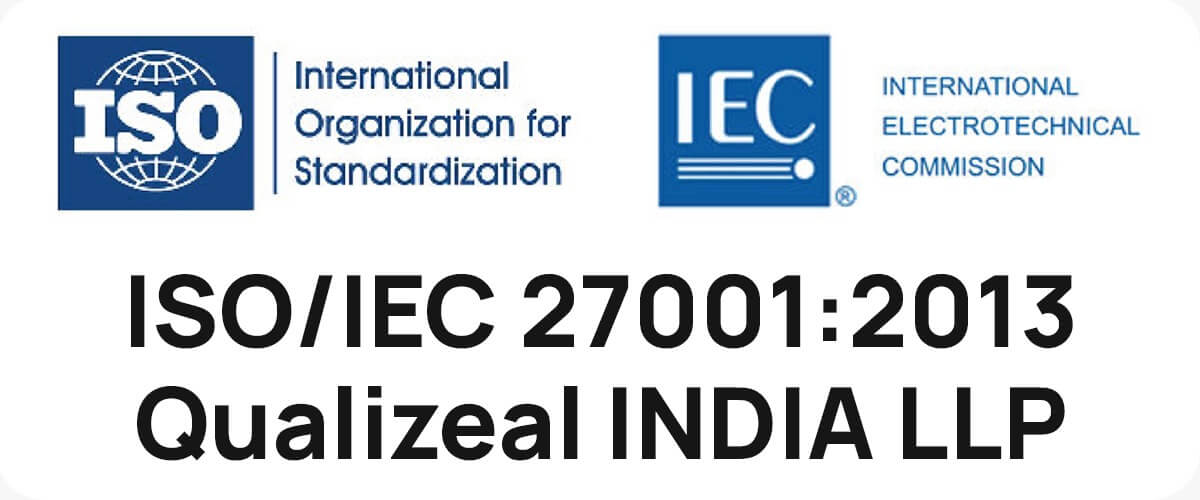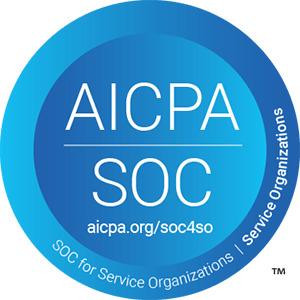Software system integrity is becoming highly crucial for the BFSI sector, given the rapid adoption of online banking, digital transactions, and financial services. The stakes are high because even the smallest glitch in software results in huge financial loss and damage to the company’s reputation. That is why rigorous software testing is not just a necessity but an important cornerstone in the operational strategy of the BFSI sector.
The global BFSI security market was valued at USD 65.59 billion in the year 2024, and it is expected to grow at a CAGR of 13.16% between 2024 to 2033. BFSI Software Testing includes the validation of systems for functionality, performance, and security to avoid vulnerabilities that will allow seamless and error-free operations, making it integral to the overall security strategy in the sector.
The reason why rigorous software testing is critical is because the BFSI industry is highly and heavily regulated, and the software testers have to think beyond the common test cases and perform industry-specific tests as well.
Let’s understand those challenges and best practices in detail, along with the best test case template, so you can contribute your part in simplifying the BFSI software testing process.

Challenges Associated with BFSI Applications
Understanding the challenges that BFSI applications face is crucial while discussing BFSI software testing. Applications in the BFSI vertical have unique challenges due to complex systems and high demands for security coupled with flawless performance. Their reliability and accuracy, with constant updates, also contribute to the complexity. Here are the major challenges or complexities they overcome:
1. Diverse Financial Products and Complex Dependencies
BFSI applications are expected to be designed to facilitate various financial products and services with different aspects catering to each customer’s needs. These applications have to accommodate everything from savings accounts to high-end investment portfolios.
All the BFSI processes are interconnected in one way or the other, which must be managed in such a way that either conflict or crashing of the systems does not take place. For instance, BFSI software presents investment opportunities like mutual funds, stocks, and bonds. This requires integration with capital markets, asset management, and advisory services.
Different types of third-party applications are dependent on BFSI software, like Stripe, PayPal, and RazorPay, which are integrated with eCommerce websites to facilitate the purchase and complete payment processing.
2. Stringent Regulatory Compliance
The BFSI sector is surrounded by strict norms concerning data protection and privacy, AML (Anti-Money Laundering)/KYC (Know Your Customer), and financial reporting, all of which differ from region to region.
The compliance requirements vary significantly from one region to another and require flexibility in terms of the implemented systems. So, the test cases and strategy should be designed keeping these regulations in mind.
Since these regulatory standards are constantly evolving, applications that are developed for such industries require constant updates and review. This poses a challenge in the management of applications, thus increasing the complication level of QA processes.
3. Security and Confidentiality Concerns
BFSI applications process and store highly sensitive information; therefore, they are more vulnerable to cyber-attacks and fraud. The applications are always exposed to threats such as hacking, data theft and fraud, thus requiring very robust security measures and constant BFSI software testing.
It is imperative to continually test the application relative to each form of vulnerability to ensure customer data confidentiality and integrity.
4. Frequent Technology/System Upgrades
The technology is constantly evolving and new frameworks, tools, and programming languages are being introduced. Each upgrade, like OS patches, library updates, or infrastructure changes, can affect the application ecosystem.
Hence, it calls for continuous functional and non-functional regression testing which helps achieve efficiency and effectiveness. Continuous testing allows for early detection of defects in the development and the automated test scripts allow for faster execution of test cases.

Best Testing Practices
The best testing practices in BFSI applications play an important role in ensuring that BFSI applications are reliable, secure, and of high performance. Accordingly, some major testing practices to be employed while performing BFSI software testing are highlighted below:
1. Harvesting Test Assets For E2e (Upstream To Downstream) Reuse
The BFSI applications are highly integrated and there are processes, like payments and regulatory reporting, which are common in all systems. That’s why, you can harvest some of the testing scripts and reuse them from upstream systems, like core banking processes, to downstream systems, like reporting tools and customer-facing apps. Running the same test cases across different systems will ensure that the same validation criteria are maintained.
2. Make the Testing Tool Landscape Optimized
100% test automation is impossible because when it comes to usability, interface, or recuperation, manual testing is preferred over automated testing. There are various testing tools available, but your chosen one might not address other challenges. This means you will have to invest in other tools, making the entire testing process expensive.
Hence, it is best to invest in software test automation execution planning and reporting portal, which is a centralized platform for the collaboration of teams and tools. The team members can manage test cases, execution plans, results, and reports, and provide a 360-degree view of testing process.
Like, for instance, QualiCentral is one such tool, which is entirely customizable. Your team can create your own unique continuous test automation platform by modifying the pre-built QualiZeal quality engineering platform.
You can run the test on your chosen environments either on-premise or cloud and supports AI/ML capabilities it can predict defects, execution time required, test case pass rates, and suggest a high-value test that requires execution on priority.
3. Continuously Measuring, Inferring And Acting On Quality Metrics
Software quality metrics are essential as they help to measure and monitor test activities, providing critical insights into testing activities, team productivity, and system quality. It provides quantitative measurement of data to estimate the progress and quality of the testing process and helps to understand the type and scale of improvements required.
Process metrics (test case effectiveness, cycle time, defect fixing time), product metrics (number of defects, defect severity, passed/failed test cases), and project metrics (test coverage, rework metrics, budget/schedule variance) are some metrics that should be continuously measured.
Trend analysis, root cause analysis, and other types of analysis can be carried out to infer from the collected data and you can take targeted actions to address the problem areas.
4. Continuous Test Automation Drive
Automation of test cases is a powerful practice that scales up efficiency regarding the testing process. The automated test scripts provide for quicker and more consistent execution of repetitive tasks.
The automated testing software executes pre-scripted tests, compares the result with actual outcomes, and reports the anomalies. Automated testing can be scaled up for complex applications, and it excels at detecting regressions as well.
Also, it is best never to compare between automated testing and manual testing. Both approaches are valuable and balance the disadvantages associated with each other. Like automated testing is fast and efficient and manual testing is time-consuming. Manual testing helps to assess the software such that the usability meets accessibility, but automated testing might fail to test from that perspective.
Measuring the ROI is critical because it indicates whether the automation is providing any value as compared to costs incurred in implementing and maintaining the automation framework and test scripts.
ROI can be easily calculated using the formula: [(Benefits-Costs)/Costs]*100. A positive value indicates that it has provided significant value to the testing process. Costs include license, hardware, training, implementation, and maintenance, whereas the benefits include team productivity, faster agile test cycles, business continuity, operational efficiency, and customer satisfaction.
5. Do Regression Testing
Regression testing is important to ensure that the recent changes or modifications in code do not impact any of the existing functionality of the software. There should be three primary catalysts available to initiate regression testing: requirement/code change, new feature addition, and defect fixing for bugs.
Continuous running of regression tests will enable teams to discover and resolve issues earlier to prevent any defects from reaching the production environment, thus guaranteeing the reliability of software.
6. Embrace New Approaches: Negative Testing and Shift Left
Embracing new approaches makes it easier to conduct QA and testing and assess the BFSI applications from all aspects. For instance: Negative Testing strategy aims to identify bugs and issues that affect user experience negatively. It utilizes negative test cases, like how the software handles unexpected conditions?
Similarly, Shift-Left Continuous Testing is another advanced approach where the testing process, instead of keeping at the end of the process, participates throughout the software development lifecycle. It focuses on early detection and resolution of bugs.

Improving the Process: How to Write the Test Case Template?
Creating a test case template is necessary because an organized one will ensure the testing process is thoroughly and efficiently executed. When developing the test case template for BFSI Software Testing, the template should have certain fields to fit the nature of the industry and the related challenges and rules.
A well-developed test case template guarantees thorough testing and verification of the software features. Here are the key components that should be included:
| Element | Purpose |
| Test Case ID | This makes it easier to identify the test case by providing a unique identification number. |
| Title/Description | Provide a short summary of what the test case is designed to accomplish. |
| Objective | It is necessary to describe or state the purpose of that specific test case. |
| Precondition | Identify the necessary prerequisites before execution. |
| Test Steps | Explain the procedures in detail and organize them with clarity. |
| Input Data | Mention the range of input that should be given |
| Expected Results | Define the expected outcomes. |
| Actual Results | Document the actual results and outcomes of the test. |
| Test Environment | Synchronization of setting up the system along with configurations can be described here. |
| Attachment | The original screenshot or any other supporting documents should be uploaded here. |
| Conclusion | A brief of the results and the general condition of the test. |
Besides the above parameters, some other things that the test case should include are test data preparation instructions, test execution data, execution status, test verdict, bug details (optional), test case author, reviewer name, test case version, and additional comments/remarks.
The format will ensure that every aspect is covered, which will naturally help in the identification of issues at the initial stages and thereby minimize risks within BFSI software systems.

The Bottom Line
BFSI software testing challenges emphasize the need for proper depth and highly structured testing processes. Clear identification of objectives, risk analysis, documentation of the test plan, automation of test cases, and comprehensive regression testing assist financial institutions in the build-up of robust and secure software systems.
Another best practice is to have a mix of the in-house and offshore testing teams because the in-house team responds quickly to issues, and the offshore team brings flexibility and autonomy. If you are looking for an offshore team to perform BFSI software testing, let QualiZeal‘s professional mobile testing services and test automation solutions raise the bar for your financial software in terms of reliability and security. See how our expertise can revolutionize your BFSI applications.












